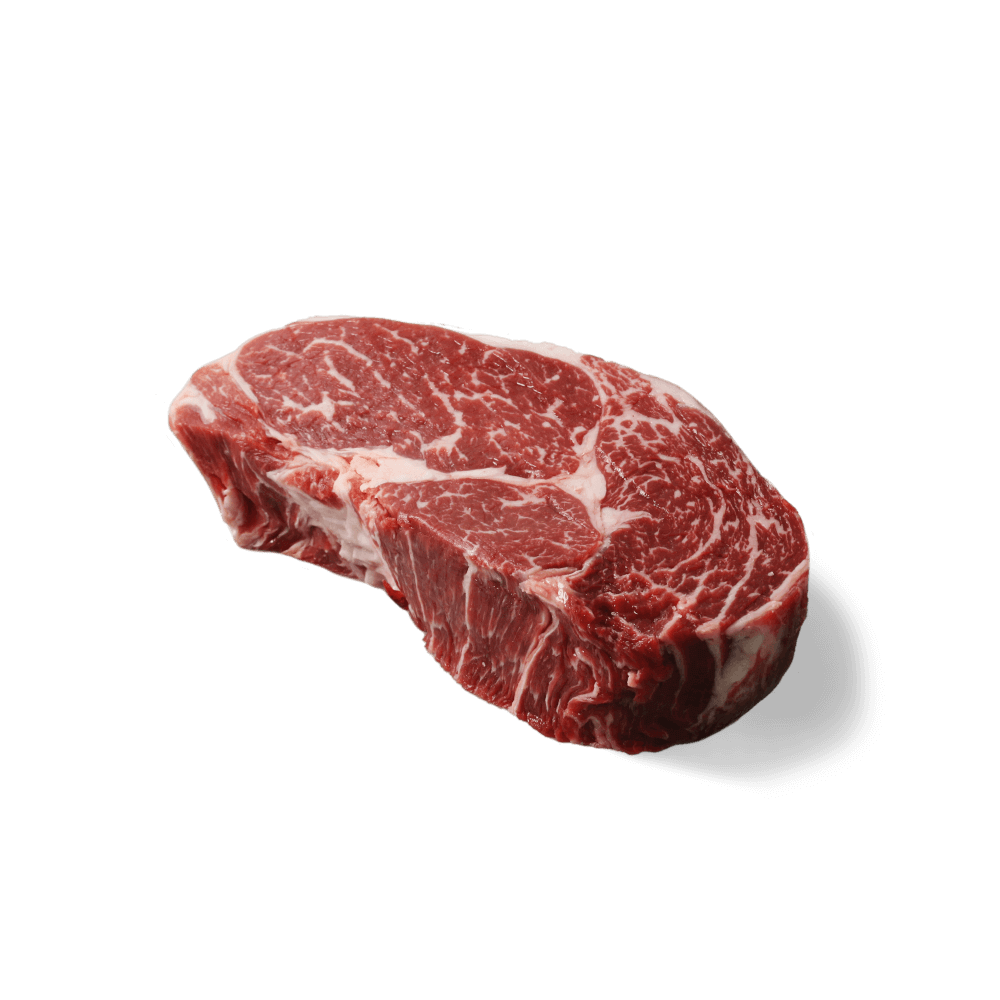 USDA PRIME
USDA PRIME
These boneless Ribeye Steaks are graded USDA Prime, the top tier of quality in the U.S. On average, about 9% of graded cattle will achieve Prime status, but taking things a step further, we inspect each primal that moves through our facility to guarantee quality. If we don’t think a piece deserves the Prime grade, we won’t ship it.
 HOLSTEIN CATTLE
HOLSTEIN CATTLE
Our Ribeye Steaks are cut from Holstein cattle, raised in California predominantly in the Southeast corner of the state. The size (diameter) of Holstein steaks will be smaller than the Angus, which will allow for a thicker steak.
 SHIP FRESH
SHIP FRESH
We cut these steaks fresh the day we ship out, and once they are received they are good for 4-5 days in your refrigerator, or 6-7 months in the freezer.
 DRY AGED
DRY AGED
Before these were processed into steaks, these Ribeyes were dry aged for 30-35 days.
The dry aged Ribeye Steak is the key to any man’s heart (or lady, for that matter). The Ribeye comes from the rib area of the animal…go figure. Once the bones are removed from the rib, you’re left with a boneless Ribeye, which can either be cut into individually steaks, or left in the larger format as a boneless Ribeye Roast.
The rib runs from the loin (where you’ll find the New York Steak), up towards the neck (or chuck). Nowadays, these sections are produced with a total of 7 ribs. Years ago you’d get 8 ribs, but in today’s production the first rib (or last) is left on the shortloin. My guess on this is that since the shortloin generally carries a higher price tag, beef processors figured out they could shift a few pounds from a lesser priced cut (relatively speaking) to one that sells for more.
Because the rib is directly next to the loin, one end of the Ribeye Steak will look similar in shape to the New York steak, and as you move further towards the chuck, you’ll have more of the ribcap, or spinalis dorsi, muscle appear.
What gives the Ribeye its dramatic flavor, in addition to the dry aging, is the amount of fat and marbling; this is what sets it apart from the New York.
Personally I believe that the Ribeye Steak gains the most from the dry aging process, in relation to the other premier cuts. There’s an inherent depth of flavor in the Ribeye that beats many other cuts, but if you were looking from a tenderness standpoint, it wouldn’t rank first (that honor rests with the Filet Mignon).
Of the “Top 3” cuts of beef (Filet Mignon, New York, and Ribeye), the Ribeye Steak will rank number one in flavor, and number three in tenderness. Keep in mind, however, what it’s up against in the tender department; those two are hard to beat. Some die-hard USDA Prime fans find the Filet Mignon too tender, in fact. In addition to the inherent flavor that Ribeyes have, when combined with the punch that dry aged beef packs, there is simply nothing more flavorful. For true beef lovers, a USDA Prime dry aged Ribeye Steak is the pinnacle of perfection.
![]() USDA PRIME
USDA PRIME![]() SHIP FRESH
SHIP FRESH

